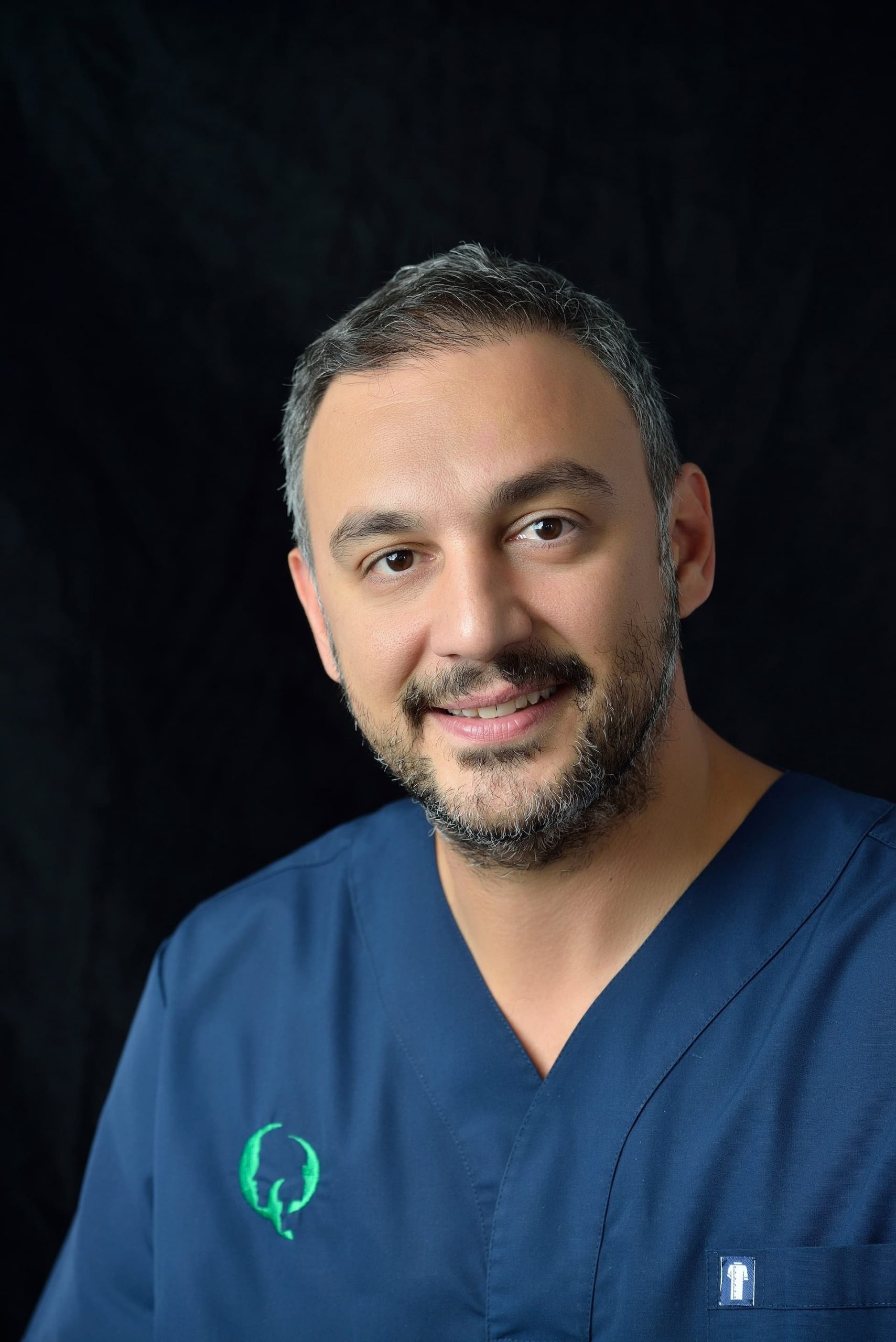Our clinic uses Dental Surgical techniques in combination with the use of Membranes and Grafts, which result in the regeneration of bone and tissue where there are anatomical limitations and aesthetic problems. This definitively solves the problem in cases where the jawbone is not of suitable dimensions for implant placement and is essentially the basic solution. Bone grafts are used with the aim of the Oral Surgeon to proceed with bone and tissue regeneration, using specialized techniques combined with the latest generation of medical equipment for maximum safety.
During the planning of the treatment process, the medical team takes into account the individualized needs of each patient combined with a wide range of factors to achieve a flawless end result. The implant philosophy requires that all decisions made regarding materials and implants be tailored to the patient’s needs.
Placement of Bone Blocks
The purpose of bone blocks is to rebuild the missing area of the jaw (bone deficits) so that it is ready to accommodate the implants that are to be placed. They are essentially three-dimensional bone blocks created from a bone graft taken from the patient. Usually, the area from which the bone graft is taken is the external oblique line of the mandible.
Sinus lift
Sinus lift is one of the modern techniques used in our clinic and is considered necessary in certain cases. The Maxillofacial Surgeon and his specialized medical team, with years of experience and full training on even the most difficult cases, guarantee long-lasting and unique results in the safest way. The up-to-date techniques used in our clinic and the latest generation medical equipment are key factors that contribute to the complete success of the procedures we undertake, while our goal is to create a friendly and comfortable environment that inspires confidence in the patient.
Zygomatic Dental Implants
Zygomatic implants are a specialized method based on the basic principle of patient well-being. Based on this philosophy, the surgical technique is not fixed and fixed, but instead is determined solely by the patient’s anatomy. Thus, the Maxillofacial Surgeon is guided by the particular needs and the specific characteristics of the patient’s anatomy and tries to adapt the instruments and procedures to each individual case. The philosophy of cheek implants aims to achieve long-term success in the treatment of severe maxillary atrophy.
Personalized Dental Implants
Personalized implants are manufactured using a 3D laser process, creating unique results and offering significant benefits and immediate restoration of the patient’s health. They are designed and created customized to each individual patient and are fully compatible with the human body. They are an excellent option for dental restoration, as long as adequate bone and tissue is present.
Distraction osteogenesis
Distraction osteogenesis is a modern method through which deformities are corrected functionally as well as aesthetically. It causes much less pain compared to other methods, has a relatively short duration (2 hours) and offers an elegant end result, such as an improvement of the facial contour. Distraction osteogenesis is performed under local anaesthesia and is performed after a panoramic examination and CT scan have been performed.
See More
Guided Tissue Regeneration
Trauma, tooth extractions, periodontal disease, and anatomical deformities are likely to cause tissue deficits with functional and aesthetic complications. Guided tissue regeneration is a technique that leads to the regeneration of lost periodontal tissues in a controlled manner. It is essentially a surgical practice that combines the use of bone grafts with the placement of membranes. The bone grafts fill the gap of the bone deficit by acting as a “scaffold” for the creation of new bone.
Nerve Repositioning
Placement of intraoral implants requires adequate bone. However, there are several cases in which the adequacy of facet bone is not the norm in surgical implantology, as there are many cases of loss of facet bone due to periodontal disease, destruction of the parietal bone usually due to extraction, or even resorption due to chronic numbness. Furthermore, the posterior mandible presents a difficulty because the mandibular angiovascular ligament passes through the mandibular medulla before passing through the genial foramen to nerve half of the lower lip. This difficulty occurs from the third molar region up to the second premolar region.


